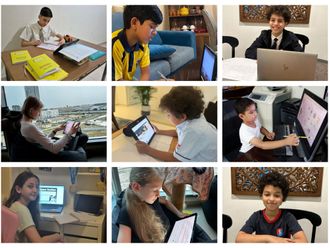
Every place has its own cultural way of doing things, be it how people celebrate, eat or mourn. Although it is safe to say that globalisation has reached the far corners of the globe, these peculiarities still apply to working cultures. For instance, management styles in certain parts of the world may seem alien in others.
However, an idea put into practice in the United States during the 1970s' fuel crisis has lived on through the decades and may now, in fact, propose the solution to the UAE's Emiratisation conundrum.
Dr Mona Mustafa, assistant professor of human resource management at the University of Wollongong in Dubai (UOWD), has spent the last eight years researching the habits of teleworkers in the West. She has now turned her mind to the use of teleworking in the UAE as a way to integrate Emirati women in the labour market.
"Teleworking as a concept started in the 1970s during the US fuel crisis when companies told people to work from home to save money," Dr Mustafa said. "My new research looks at how teleworking can help Emiratisation by integrating otherwise unemployed Emirati women into the labour market."
Her research will investigate the opportunities remote working offers as a means of absorbing Emirati women into the UAE's workforce.
"The study will mainly focus on the idea of graduates looking for jobs who find a position, but after a year's training, can ask for flexibility," she said. "Because then, if they decide to get married and start a family, it doesn't mean they have to make choices and leave the labour market altogether."
Challenges
Theoretically, teleworking, not necessarily defined as working from home but anywhere outside the office, may sound like a dream come true, but it comes with major challenges. It started with workers in the sectors of IT, translation and media. "Basically, the two main ideas of teleworking is of an employee allowed by their employer to work from home or flexibly, and a self-employed person who works from home," Dr Mustafa said. "The self-employed have more freedom and flexibility, which is good, but can also cause problems." Due to the financial crisis and subsequent redundancies, self-employed teleworkers have been on the increase.
However, Dr Mustafa's main area of interest is boundary management, and how teleworkers maintain a healthy work-life balance.
"Traditionally, when we leave the home and close that door to go to work, you enter a new boundary, so traditionally people had them separate," she said. "With people working from home, these boundaries are sort of mixing, which becomes very challenging."
Mariam Khazaeli, 26, is readying for a master's degree at the UOWD and used to telework as a software designer. She believes it to be a good option for students and mothers if a person is self-disciplined. "People work better when they can choose what to do because some people perform better at night, others in the morning," she said. "I managed to telework and study by attending evening classes."
Khazaeli added that teleworking could be a good option for women, especially of Eastern cultures, due to their responsibilities inside and outside the home.
Eyeball management
"In this part of the world, the management style is managing by eyeballs as employers have to see the person in the office to believe they are working," she said. So, besides the building of trust between employer and employee in the region, she also believes adequate training and discussion need to take place before the idea of teleworking pervades the UAE.












